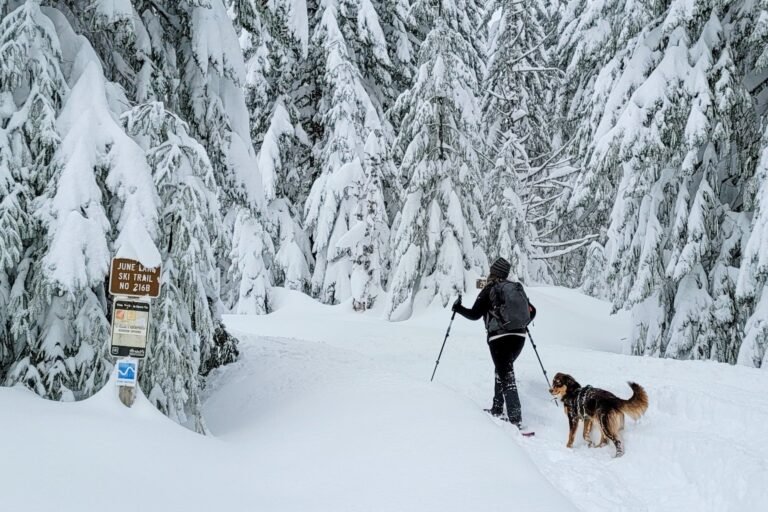There’s a unique set of challenges you need to prepare for when you decide to bring your pets along on a camping trip in remote areas. From ensuring their safety in unfamiliar environments to managing their needs away from modern conveniences, you may find that outdoor adventures are a bit more complicated with furry companions. Understanding these challenges can enhance your experience, making it enjoyable and safe for both you and your pets. This guide will explore the imperative considerations to keep in mind as you plan your adventure in the wild.
Understanding the Unique Challenges
While camping in remote areas with pets can be an exhilarating experience, it also presents unique challenges that require careful consideration. You will need to think about your pet’s safety and comfort, how they will adapt to unfamiliar environments, and the availability of resources to support their needs. Planning ahead is imperative to ensure a memorable adventure for both you and your furry companions.
Wildlife Encounters
On your camping trip, you may encounter various wildlife that can pose a threat to both you and your pet. Animals such as bears, coyotes, or snakes could appear unexpectedly, leading to dangerous situations. It’s important to keep your pets on a leash and remain vigilant about their surroundings to avoid any potential conflicts.
Limited Resources
On your journey to remote locations, you might face a scarcity of resources, which can affect your pet’s wellbeing. Unlike established campgrounds, these areas may lack access to veterinary services, fresh water, or pet-friendly accommodations. You must be prepared to bring all necessary supplies from food to first aid kits, ensuring your pet remains healthy and comfortable throughout the trip.
At times, the limited resources available in remote camping areas can challenge your planning. You should carry ample food and water to meet your pet’s needs, taking into account their size, breed, and activity level. It’s wise to pack extra supplies for emergencies, such as a comprehensive first aid kit and medication. Also, plan for waste disposal by bringing biodegradable bags to minimize your impact on the environment. By anticipating these limitations, you can ensure a smoother and safer camping experience for both you and your pet.
Preparing for the Journey
Assuming you’re planning a camping trip in a remote area with your pet, it’s imperative to start early with your preparations. Consider your travel route, place of stay, and necessary regulations regarding pets in your chosen campsite or national park. Creating a checklist can help ensure that no important items are overlooked, making for a smoother experience on your journey.
Essential Gear for Pets
By packing the right gear for your pet, you can enhance their comfort and safety during your adventure. Essential items include a sturdy leash, a secure travel crate, a portable water bowl, food, and a first-aid kit specifically designed for pets. Additionally, bring along any favorite toys or blankets to help your furry friend feel at home in the great outdoors.
Health and Safety Precautions
Safety is paramount when camping with pets in remote areas. Keeping your pet protected from potential hazards, such as wildlife encounters or extreme weather conditions, will ensure a safer trip for both of you.
And before you head out, make sure to check with your veterinarian about vaccinations and preventive medications for ticks, fleas, and other pests. Having a current ID tag on your pet and using a microchip will help if they get lost. Additionally, consider bringing a pet-friendly first-aid kit that includes items such as antiseptic wipes, bandages, and any medication your pet may need. Proper planning ensures that your adventure is both enjoyable and safe for your furry companion.
Food and Water Considerations
It is imperative to plan your pet’s food and water needs carefully when camping in remote areas. Without access to stores, you’ll need to carry enough supplies for the duration of your trip, considering your pet’s dietary requirements and any specific preferences they may have. Additionally, weight can be an issue, so opt for high-nutrient, lightweight options, and always keep a backup supply in case of emergencies.
Nutritional Needs of Pets
Above all, understanding your pet’s nutritional needs is vital. Ensure that you bring along their regular food, as sudden dietary changes can lead to digestive issues. You should calculate their daily intake based on their size, age, and activity level, keeping in mind any specific dietary restrictions your pet may have.
Finding Water Sources
Food and water are imperative for your pet’s well-being on remote camping trips. Identifying reliable water sources is your responsibility to keep both you and your pet hydrated throughout your adventure.
And when it comes to finding water sources, look for streams, lakes, or rivers along your route, but always purify the water before allowing your pet to drink from it. Boiling, filtering, or using purification tablets can eliminate harmful bacteria and ensure your pet stays healthy. Additionally, carry a portable water container for convenience, and consider taking along extra water for emergencies, especially if you’re heading to a particularly arid area.
Navigation and Communication
Unlike camping in urban settings, navigating remote areas can pose significant challenges, especially when you have pets in tow. GPS devices can lose signal, and traditional maps may not always provide clear guidance. You must be equipped to handle unexpected detours and ensure you and your furry companions stay on the right trail. Look into offline map apps or portable GPS units to maintain your sense of direction without relying on cell service.
Keeping Pets on Track
Track your pet’s location with a reliable tracking device. These small gadgets can be attached to your pet’s collar, providing peace of mind as you explore the wilderness. Having a way to locate your pet easily ensures you can enjoy your adventure with less worry, allowing you to focus on creating beautiful memories together.
Emergency Communication Plans
One important aspect of camping in remote areas is having an emergency communication plan in place. You should consider how you would reach help if something were to go wrong. This might involve carrying a satellite phone, a personal locator beacon, or ensuring you have a means to send a distress signal.
For instance, investing in a satellite phone can be a game changer, as it allows you to make calls even when you’re far from cellular networks. Additionally, establish a meeting point in case you and your pet get separated, and share your itinerary with a trusted friend or family member. Planning for emergencies not only helps you feel secure but also ensures the safety of your beloved pet while you navigate the great outdoors.
Outdoor Etiquette with Pets
Keep your furry friends safe and respected in the great outdoors by following proper etiquette. This includes keeping your pets leashed at all times, cleaning up after them, and ensuring they don’t disturb wildlife or other campers. By being a responsible pet owner, you contribute to a positive camping experience for everyone involved.
Respecting Nature and Wildlife
The presence of your pet in a natural setting must be managed with care. Wildlife can be easily stressed by unfamiliar animals, so keep your dog on a leash to prevent any unwanted encounters. Make sure to keep food sealed and stored properly to avoid attracting wildlife that can disturb both you and your pet.
Campsite Rules and Regulations
Rules regarding pets vary across different campsites, so it’s crucial to familiarize yourself with specific regulations before you arrive. Each campground may have different rules about pet sizes, leash requirements, and designated pet areas. Furthermore, many sites require pre-approval for bringing pets, and certain locations may even restrict pets altogether during peak seasons.
Considering the diverse regulations in each camping venue, it’s advisable to research in advance. Check the campground’s website or contact the administration for detailed pet policies. Complying with these rules can help protect local wildlife and preserve the beauty of the natural environment, ensuring a more enjoyable experience for everyone. Adhering to the regulations not only keeps your pet safe but also shows respect for fellow campers and the surrounding nature.
Tips for a Successful Camping Experience
All successful camping trips require careful planning and attention to detail, especially when bringing your pets along. Consider these tips:
- Research pet-friendly campsites in advance.
- Pack ample food and water for both you and your pet.
- Bring a first aid kit specifically for pets.
- Create a safe space for your pet to rest and explore.
- Have a backup plan for emergencies.
Recognizing these needs will ensure a smoother adventure for both you and your furry companion.
Adjusting to Remote Living
At first, adjusting to remote living can be challenging for you and your pet. It requires a shift in mindset and daily routines, as amenities may be limited. Familiarize yourself with your surroundings and create a designated area where your pet can relax while you explore the area around your campsite. Take small steps to acclimate both of you; this helps establish a comforting environment amid the wilderness.
Building a Bond with Your Pet
To strengthen your bond with your pet while camping, prioritize quality time spent together. Engage in activities like hiking, playing fetch, or simply relaxing by the campfire. This not only fosters trust but also creates shared memories that are invaluable. Be attentive to your pet’s needs and respond to their comfort levels; this can deepen your connection.
Living in close quarters during a camping trip offers a unique opportunity to strengthen the bond you share with your pet. Use this time to develop a deeper understanding of their quirks and preferences. Share experiences that allow both of you to learn from one another, whether it’s navigating unfamiliar terrain or enjoying the tranquil moments at the campsite. Making these memories together enriches your relationship, ensuring a fulfilling outdoor experience.
Final Words
Following this, it’s important for you to understand the unique challenges of camping in remote areas with pets. From securing necessary supplies to navigating potential wildlife encounters, proper preparation can make your experience enjoyable for both you and your furry companions. Ensure you have the right gear, know local regulations, and always prioritize your pet’s safety and comfort. With the right approach, camping in the wilderness can be a rewarding adventure that strengthens the bond between you and your pet.






